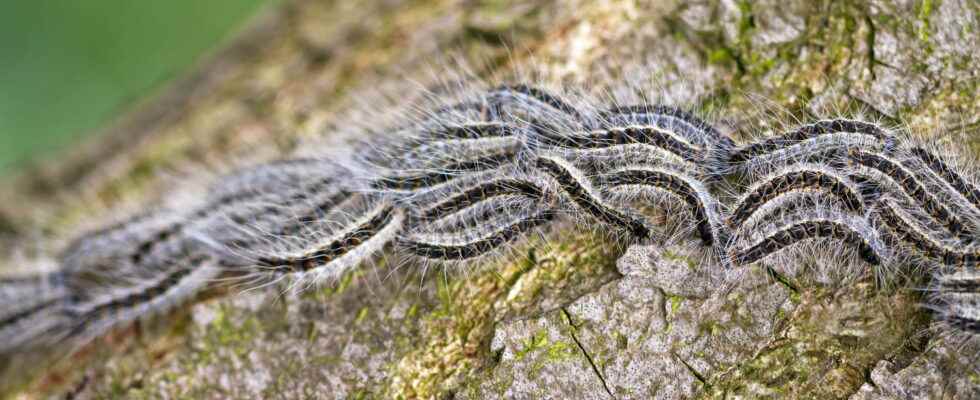Processionary caterpillars, present in France, are developing at breakneck speed in Ile-de-France. We can even speak of a generalized invasion! If their size is not impressive, contact with them can lead to more or less serious allergic reactions. Here’s what you need to know.
If the processionary caterpillars have been present in France for a long time, this year, their presence in number throughout the Ile-de-France continues to grow, which is starting to make people talk about them and to worry. Not exceeding 4 cm in length, the processionary caterpillar is recognizable by its brown body bristling with hair. Named like this because of its group movement in the form of an Indian file, the processionary caterpillar builds its nest, often of good size, in the branches of pines or oaks, depending on whether it is an oak processionary caterpillar (stinging from spring to early summer), or a pine processionary caterpillar (stinging from autumn to spring).
Why is its presence in France, and more particularly in Ile-de-France, worrying? Quite simply because it is now classified by a decree of April 25, 2022 as a species harmful to human health. Marilou Mottet, coordinator of the observatory of processionary caterpillars, explains to our colleagues from Ouest-France that from now on, “the prefects of the department will have to issue a decree specific to processionary caterpillars on their territory. The fight will be compulsory in certain very at risk”. Is this species of caterpillar really dangerous for humans? What if you have been in contact with her? How to protect yourself from it? And how to get rid of it?
What are the dangers of the processionary caterpillar?
The processionary caterpillar has two types of hairs, soft white, and small orange hairs, very stinging. If the caterpillar feels in danger, it will release these small microscopic orange hairs which fly away, can then cling everywhere on your skin, and even insert themselves in the internal orifices such as your nostrils. It is by breaking that these hairs will release a dangerous and allergenic toxin, thaumetopoein. Here are the symptoms that may appear if you have been in contact with one of these little beasts:
- Itching;
- Conjunctivitis in case of contact with eyes;
- Respiratory tract irritation;
- Hypersalivation in case of ingestion of small hairs;
- Difficulty swallowing;
- Possible vomiting;
- Abdominal pain.
If its sting can cause allergic reactions in humans, it can even prove fatal for pets who would be tempted to taste it.
Here are the recommendations and actions to adopt from thehandles if you are in the presence of processionary caterpillars:
- Do not approach them;
- Do not touch the caterpillars or their nest;
- Wear covering clothes (trousers and long-sleeved T-shirt) when walking in the forest, or if you are near an infested tree;
- Avoid rubbing your eyes;
- Do not dry your laundry outside if you have processionary caterpillars in the garden;
If you have been in contact with these caterpillars:
- Take a shower and change clothes;
- Photograph the caterpillar to help identify the type of pest;
- In the event of a serious allergic reaction such as breathing difficulties, call 15, or go to the emergency room;
- In case of poisoning, call a poison control center or your doctor;
If your pet has been in contact with processionary caterpillar hairs, do not wait, go immediately to the veterinarian, or call a veterinary poison control center.
Here are some natural tips to get rid of these little beasts:
- Spray thuringian bacillus on processionary caterpillar nests using a long-range sprayer. This insecticide will attack the digestive tract of the caterpillars, and thus kill them.
- Install a processionary caterpillar trap collar on infested trees.
